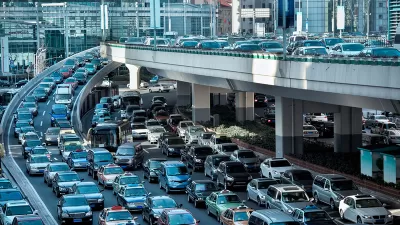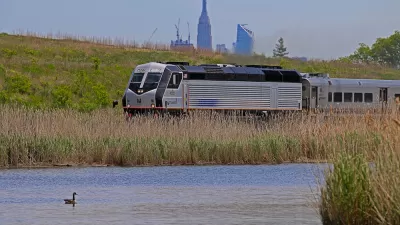The percentage of Americans working primarily from home tripled to over 27 million people during the pandemic. Will the popularity of remote work last?

As questions about the ‘return to the office’ linger, new data from the Census Bureau reveal that the number of people primarily working from home tripled between 2019 and 2021, with a record-high 17.9 percent of Americans working mostly from home.
“Nearly half (48.3%) of workers in the District of Columbia worked from home, the highest percentage of home-based workers among states and state equivalents in 2021.” Other states with high work-from-home rates are Washington, Maryland, Colorado, and Massachusetts, where close to a quarter of workers now work mostly remotely. Correspondingly, commutes have dropped to an average of 25.6 minutes one-way in 2021, two minutes shorter than the average 2019 commute.
Even as COVID-19 fears subside, remote work remains popular with employees and many employers who see advantages in a reduced need for office space and more flexibility in hiring. As technology makes it possible for more industries to shift to remote or hybrid work, the transportation networks, ancillary service industries, and other systems designed around the traditional 9-to-5 commute cycle will have to adapt to the new realities of the post-pandemic city.
FULL STORY: The Number of People Primarily Working From Home Tripled Between 2019 and 2021

Study: Maui’s Plan to Convert Vacation Rentals to Long-Term Housing Could Cause Nearly $1 Billion Economic Loss
The plan would reduce visitor accommodation by 25,% resulting in 1,900 jobs lost.

North Texas Transit Leaders Tout Benefits of TOD for Growing Region
At a summit focused on transit-oriented development, policymakers discussed how North Texas’ expanded light rail system can serve as a tool for economic growth.

Why Should We Subsidize Public Transportation?
Many public transit agencies face financial stress due to rising costs, declining fare revenue, and declining subsidies. Transit advocates must provide a strong business case for increasing public transit funding.

How to Make US Trains Faster
Changes to boarding platforms and a switch to electric trains could improve U.S. passenger rail service without the added cost of high-speed rail.

Columbia’s Revitalized ‘Loop’ Is a Hub for Local Entrepreneurs
A focus on small businesses is helping a commercial corridor in Columbia, Missouri thrive.

Invasive Insect Threatens Minnesota’s Ash Forests
The Emerald Ash Borer is a rapidly spreading invasive pest threatening Minnesota’s ash trees, and homeowners are encouraged to plant diverse replacement species, avoid moving ash firewood, and monitor for signs of infestation.
Urban Design for Planners 1: Software Tools
This six-course series explores essential urban design concepts using open source software and equips planners with the tools they need to participate fully in the urban design process.
Planning for Universal Design
Learn the tools for implementing Universal Design in planning regulations.
City of Santa Clarita
Ascent Environmental
Institute for Housing and Urban Development Studies (IHS)
City of Grandview
Harvard GSD Executive Education
Toledo-Lucas County Plan Commissions
Salt Lake City
NYU Wagner Graduate School of Public Service





























